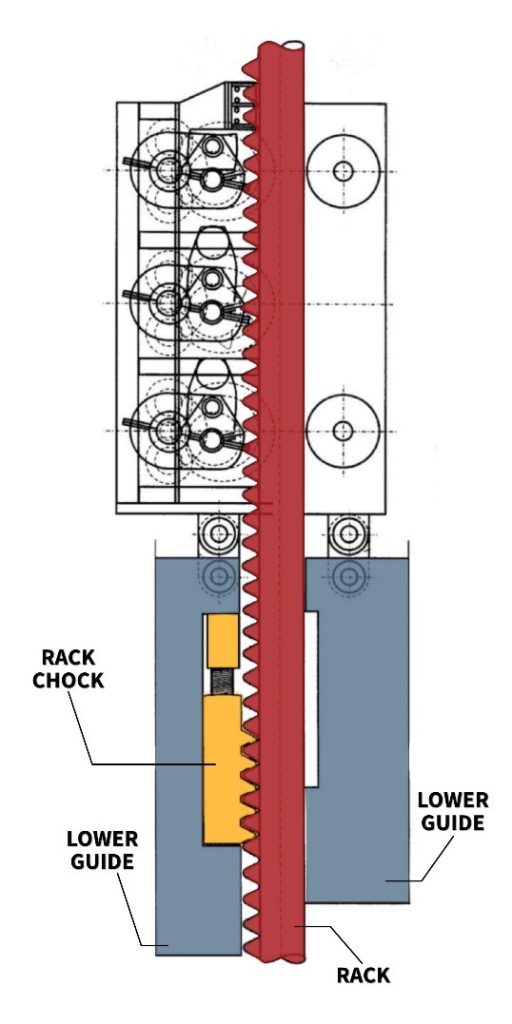
Every jackup leg is equipped with a set of guides. These ensure the leg doesn’t move horizontally, while allowing vertical movement. By restricting horizontal movement, the guides keep the leg in place, allowing travel only in an upward or downward direction.
Guides are typically made of robust steel, attached to the leg tower. Their design is formulated to withstand the hull’s weight and forces generated by wind and waves.
The placement of guides varies depending on the structure of the jackup. They are usually fitted at the top of the leg tower, referred to as the upper guide, and at the bottom, known as the lower guide. Some larger jackups, especially those with deep hulls, even incorporate intermediate guides placed strategically in the middle.
When the leg of a jackup is free from external forces, it hangs vertically in the guides without much contact, because the rack is handled by the pinions. However, when the leg is subjected to bending loads, the guides provide restraint, with the upper and lower guides responding to the stress.
Furthermore, guides play a crucial role in maintaining the ideal distance between the rack and pinion (backlash). This is vital for the overall functioning and efficient operation of the jacking system.
The role of the guides thus extends beyond just providing support and maintaining stability, they also facilitate precision in the mechanical workings of the structure.
In conclusion, the strategic placement of the guides is a fundamental stability feature, since they withstand external forces while ensuring smooth vertical movement even under stress.
